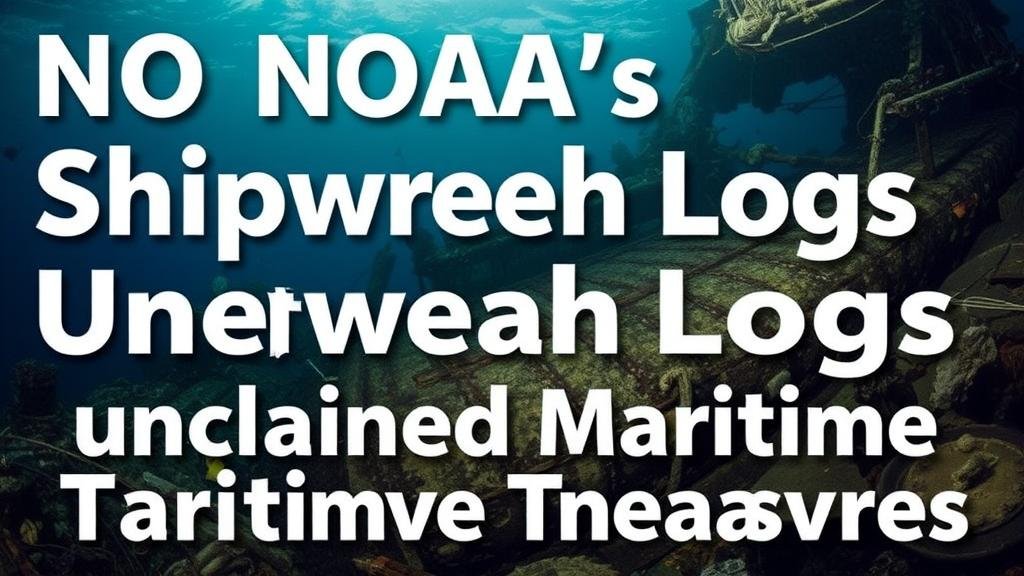Using NOAA’s Shipwreck Logs to Locate Unclaimed Maritime Treasures
Using NOAAs Shipwreck Logs to Locate Unclaimed Maritime Treasures
Maritime archaeology has long captivated historians, treasure hunters, and scholars alike, but the high stakes associated with treasure hunting often raise questions of legality, ownership, and ethical considerations. One of the most valuable resources in this area is the shipwreck logs archived by the National Oceanic and Atmospheric Administration (NOAA). These documents not only record the incidents of maritime disasters but also help in locating unclaimed maritime treasures that lie at the bottoms of the oceans and lakes. This article explores the potential of utilizing NOAAs shipwreck logs as a modern investigative tool to identify sites of historical value and economic interest.
NOAAs Repository of Shipwreck Logs
NOAA is tasked with the stewardship of the United States’ marine and coastal resources. As part of this mission, they maintain comprehensive records of shipwrecks that occur in U.S. waters. NOAAs collection includes detailed logs that provide data on:
- The date of the wreck
- The location (latitude and longitude)
- The type of vessel
- The cargo carried
- The cause of sinking
For example, NOAAs shipwreck database features an entry for the USS Housatonic, which sank off the coast of South Carolina on February 17, 1864. This ironclad warship was famously torpedoed by the Confederate submarine H.L. Hunley. vessel has become of interest not just for its military significance but also for potential treasures that may have been onboard at the time of its sinking.
Identifying Potential Treasures
The historical context provided in NOAAs logs plays a crucial role in identifying treasure buried in these wrecks. Unclaimed maritime treasures, such as gold, silver, and artifacts, can offer immense cultural and financial value. Studies have shown that many vessels were transporting valuable cargo, often reflecting the economic conditions of their time.
A notable example is the Spanish galleon Nuestra Señora de Atocha, which sank off the Florida Keys in 1622 while carrying a fortune in gold and silver. treasure was estimated to be worth upwards of $400 million today. NOAA logs enable researchers and treasure hunters to cross-reference historical records, encouraging the pursuit of similar unclaimed treasures.
Legal and Ethical Considerations
While locating treasures using NOAAs shipwreck logs can be thrilling, it also brings legal and ethical questions to the forefront. The ownership of underwater artifacts can be complicated, typically falling under international maritime law and local fiduciary rights. UNESCO Convention on the Means of Prohibiting and Preventing the Illicit Import, Export, and Transfer of Ownership of Cultural Property emphasizes the importance of protecting underwater cultural heritage.
Treasures found in U.S. waters may require the treasure hunter to secure permits and adhere to regulations set forth by government entities such as NOAA and the State Historic Preservation Offices (SHPOs). Failure to do so can result in legal sanctions, as illustrated by cases where unauthorized salvors have faced hefty fines and confiscation of artifacts.
Technological Advances in Treasure Hunting
The advancement in underwater exploration technology has greatly enhanced the effectiveness of locating shipwrecks. Sophisticated sonar imaging, remotely operated vehicles (ROVs), and underwater drones can be directly linked to insights gained from NOAAs shipwreck logs. For example, the combination of historical data and remote sensing technologies allows for precise mapping of wreckage sites.
An example of successful integration of this technology is the exploration of the Titanic wreck site. Researchers utilized historical accounts and sonar mapping to create a detailed image of the wreck and its surrounding area, revealing many artifacts that remain underwater.
Conclusion and Future Directions
The utilization of NOAAs shipwreck logs opens up fresh avenues for maritime archaeology and treasure hunting, offering a rich repository of historical information paired with the potential for significant discoveries. Maritime enthusiasts, archaeologists, and historians alike can benefit from this resource, provided they remain aware of and compliant with legal considerations.
Future research might focus on improving methodologies that assess the socio-economic contexts of shipwrecks or developing public engagement programs to educate about maritime heritage preservation. As this field continues to develop, it is essential that both the excitement of treasure hunting and the importance of ethical stewardship are upheld, ensuring that these maritime treasures are preserved for future generations.
As a takeaway, anyone interested in maritime treasure hunting should:
- Research NOAAs shipwreck logs and understand historical contexts.
- Acquaint themselves with local and international laws regarding underwater heritage.
- Use integrating technologies to enhance recovery efforts responsibly.



